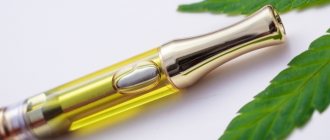The situation looks no less serious in the fall, when many summer residents or businesses are too lazy to dispose of fallen leaves. In order to save money, they set them on fire along with construction debris that comes to hand, which provokes a fire hazard. In addition, this method of disposal is considered unecological, and given the current situation with the atmosphere, this turns into real sabotage.
Causes of poisoning
During a fire, carbon monoxide and cyanide are released into the atmosphere along with smoke. Carbon monoxide blocks the work of hemoglobin in the blood vessels - oxygen does not enter the vital organs of the body. Hydrogen cyanide does not allow oxygen to enter tissue cells, causing metabolic disorders. Exceeding the concentration of these substances in the atmosphere occurs in the off-season - during the massive burning of last year's leaves, vegetable waste and garbage.
Poisoning occurs due to many combustion products. Burning material releases harmful gases and other components. Smoke is saturated not only with carbon dioxide, but also with ammonia, various acids and alcohol vapors.
Nitric acid in smoke penetrates the respiratory tract and provokes a severe attack of suffocation.
Sulfuric acid causes inflammation of the cornea of the eyes and the mucous membrane of the respiratory tract.
Ammonia vapors cause suffocation and dry cough. Ammonia intoxication is accompanied by toxic edema.
The fire is extinguished with a special chemical composition, which, upon contact with combustion products, releases a toxic substance - phosgene. An excess of phosgene vapor in the body provokes pulmonary edema. Without timely medical assistance, the situation ends in death.
Harm to the human body is caused by fumes from a fire. High amounts of it come from plastic and items made from rubber. A short circuit in the wiring and subsequent fire is accompanied by dense toxic smoke. Being at the source of such a fire risks serious intoxication and long-term treatment.
A person gets intoxicated from welding. Prolonged inhalation of smoke provokes a complication of lung disease - bronchial asthma. Slag masses and metal compounds settle in the lungs.
After a fire, a specific smell remains and is sometimes accompanied by smoldering of the remaining objects. It is not recommended to be in a fire at such a moment. Combustion products are present in the air and affect human health.
Lately, many people have been asking the question: is it possible to get poisoned by smoke from a fire? Staying near a fire for a long time is dangerous to your health. Smoke contains a lot of resins that have a negative effect on the body. Inhalation is especially dangerous for pregnant women and children.
The lungs of children and other households suffer from burnt food during cooking. The air is filled with carbon dioxide mixed with carbon monoxide. It is especially harmful and dangerous for children and pregnant women to inhale such smoke.
Impact on the body
Smoke poisoning is usually scary because the combustion process releases substances harmful to the respiratory system. This applies not only to the combustion of objects during an accidental fire or purposeful lighting of a fire, but also when a person enters a smoky room.
After the smoke enters the bloodstream, it immediately begins to bind hemoglobin. It is he who is responsible for the transfer of oxygen. If the deficiency of oxygen transport persists for quite a long time, this leads to hypoxia. Tissues and organs lose their ability to function normally, which first leads to disruption of their activity, and then to a complete cessation of vital activity.
The brain is the first to suffer from hypoxia. Its damage can cause death.
The composition of the smoke can vary significantly depending on where the fire occurs and what exactly it says. You can often get burned from smoke due to the following components:
- carbon dioxide,
- nitric oxide,
- sulfur dioxide and trioxide,
- hydrogen sulfide,
- ammonium hydroxide,
- phosgene.
But these are only the most common substances, so the smoke content can vary significantly.
Children are especially susceptible to its negative influence. If the baby's parents smoke, he may be exposed to chronic intoxication. Moreover, danger lurks not only in cases where a child falls asleep in a smoky room. A child may become a victim of secondhand smoke due to the carelessness of his own parents. This is why doctors ask mothers and fathers not to smoke in front of their children, because if they want to spoil their health, they can do so, but this should not affect their offspring.
Signs of poisoning
Intoxication by combustion products is listed under code T59 in the International Classification of Diseases. Consists of nine subsections. Symptoms of smoke poisoning are divided into three levels of severity.
Mild symptoms:
- Nausea with bouts of vomiting;
- The airways are clogged with fumes and smoke - it’s hard to breathe;
- Sore throat with dry chest cough;
- Inflammation and irritation of the nasal and oral mucosa;
- Redness of the cornea of the eyes and the area around them;
- Weakness in the body;
- A sharp drop in blood pressure is possible.
Moderate symptoms:
- The skin becomes covered with a rash;
- Strong desire to sleep;
- Heaviness in the body;
- Hallucinations;
- Inability to distinguish colors;
- Muscle spasm of the limbs.
Severe poisoning:
- High body temperature;
- Muscle weakness;
- Cramps and spasms;
- Intermittent heartbeat;
- Swelling of the nasal and oral cavity;
- Involuntary loss of urine;
- Pulmonary edema, in rare cases, respiratory arrest;
- Temporary blindness;
- Unconscious position of the victim;
- Coma state.
Under what conditions can you get poisoned?
When first aid has been provided to the poisoned person, he is taken to the hospital, where a doctor conducts an examination. When the patient is hospitalized, he is prescribed long-term oxygen breathing. Thanks to this, carbon dioxide is displaced from its connection with hemoglobin. Hyperventilation mode is maintained for 3 hours. In case of particularly severe pathology, therapy is carried out in a pressure chamber with increased oxygen pressure.
Symptomatic therapy is performed taking into account the severity of the condition. If there are indications, then apply:
- corticosteroids;
- antidotes;
- cardiac drugs;
- vitamin therapy.
Smoke poisoning can occur from a fire in a house, forest, from a fire while burning garbage, or during cooking. Particularly dangerous is the smoke that occurs when plastic burns. Therefore, to avoid smoke poisoning, all safety regulations must be strictly followed.
Lyubimtseva S. I.
Infectious disease doctor, private clinic “Medcenterservice”, Moscow. Senior editor of the website "Poisoning Stop".
Carbon monoxide poisoning
Carbon monoxide poisoning occurs when gas-powered household appliances malfunction. The reason also lies in the poor ventilation of the room. Not everyone can immediately determine what they were poisoned with. There are three degrees of severity:
- Mild intoxication is accompanied by tinnitus, mild attacks of nausea and headaches. You need to go outside.
- In moderate cases, there are signs of mild poisoning, impaired concentration, difficulty breathing and severe pain in the heart area. Loss of coordination and general muscle weakness.
- With severe intoxication of the body, loss of consciousness occurs. Feverish state, limbs cramping. Blood pressure changes dramatically. The victim may fall into a coma.
The symptom of euphoric intoxication is expressed in an excited state. Euphoria lasts 20-30 minutes, then depression sets in.
Loss of consciousness occurs due to a decrease in the tone of blood vessels and a sharp drop in blood pressure.
When poisoned by a high concentration of carbon monoxide, paralysis of the vital functions of the body occurs. Symptoms develop rapidly.
Features of treatment
After the medical team arrives, the patient is transported to the emergency department. Doctors provide such a person with long-term ventilation of the lungs with oxygen. It allows you to remove carbon dioxide and all compounds of carbon monoxide with hemoglobin from the body. If a person has a particularly serious condition, then therapy is carried out in a pressure chamber.
When indicated, symptomatic treatment is used. The following groups of drugs are prescribed:
- corticosteroid drugs;
- antidotes (to remove toxic substances);
- medications to improve heart function;
- vitamins.
Video: the effect of carbon monoxide.
First aid
The life of the victim depends on timely assistance. If smoke or carbon monoxide intoxication is detected, you must immediately call an ambulance. Before doctors arrive, first aid should be provided. The health of the victim depends on how quickly first aid is provided.
Being in a source of smoke affects the condition of the body. Combustion products penetrate vital organs and disrupt functional processes within the body. Prolonged exposure to toxic fumes can cause irreversible consequences.
The order of necessary manipulations when providing first aid:
- Protect the victim from exposure to combustion products. It is necessary to provide access to fresh air. For example, open a window or take (lead) a poisoned person outside. To ensure unhindered penetration of air into the lungs, unbutton clothing in the chest area. This will allow you to take deeper breaths. If there are belts or belts, immediately release your body from them.
- Toxic substances penetrate through the blood vessels into the cells and tissues of the body. To slow down the movement of blood throughout the body, reduce the temperature in the heart and head. In winter, you can use snow or ice. A cold compress should be placed on the chest and the frontal part of the head.
- If there is alkali in the smoke, it is necessary to neutralize its effect in the body. Give the victim water with a small amount of table vinegar to drink.
- For general muscle weakness of the body, you can drink strong, sweet tea or coffee.
- If the victim loses consciousness, hold a cotton swab with ammonia to the nose.
- When it is not possible to bring the poisoned person to consciousness, place the person on his side. Vomit will not block the airways.
- Carry out resuscitation measures in case of sudden cardiac arrest. Perform indirect cardiac massage with mouth-to-mouth artificial respiration.
- Warn the arriving ambulance doctors about your own actions in relation to the victim. This will make it easier to carry out further medical procedures.
How to protect yourself from inhaling tobacco smoke?
The correct, full development of a child in a woman’s womb depends entirely on her behavior and lifestyle. Even an unborn person already has the right to a long, healthy life.
A woman can protect this right and protect herself from the harmful passive influence of tobacco smoke in different ways:
- ask family and friends to give up the bad habit or not smoke in her presence ;
- limit or refuse to visit entertainment places where smoking is permitted;
- install special air purifiers or air washes at home that allow you to filter tobacco smoke from it, as well as its harmful components;
- carry out wet cleaning and ventilate the living space more often;
- At the workplace, a pregnant woman has the right to demand that her colleagues comply with the law prohibiting smoking in public places .
Inpatient therapy
Smoke poisoning is a condition in which the victim requires full treatment in a hospital. First of all, a person is given oxygen to breathe so that it displaces carbon dioxide from red blood cells. The oxygen concentration in the first few hours is up to 80%, after which it is reduced to 50%. If the poisoning is very severe, the patient is placed in a pressure chamber where oxygen is supplied under pressure.
How to treat the patient further depends on the degree of intoxication and the symptoms that appear. The doctor, at his discretion, can prescribe drugs from the group:
- corticosteroids;
- vitamins;
- antidotes;
- detoxifiers, etc.
Drug therapy is prescribed individually in each case.
Related secondary factors
They have an indirect effect and arise as a consequence of the main factors. However, they can cause no less harm to a living organism.
These include:
- Fragments, parts of collapsed buildings, structures, vehicles, technological installations, equipment, units, products and other property.
- Radioactive and toxic substances and materials released into the environment from destroyed technological installations, equipment, units, products and other property.
- Removal of high voltage to conductive parts of technological installations, equipment, units, products and other property.
- Hazardous factors of an explosion resulting from a fire.
- Exposure to fire extinguishing agents.
On this topic ▼
Explosion
Effects of the shock wave and damaging factors
Behind the scenes, the accompanying dangerous factors of a fire also include the occurrence of panic, i.e. psychological criterion. The inability of people to control their emotional state during emergencies makes the work of rescue services more difficult. People, caught in a fire trap, begin to perform chaotic actions or fall into a stupor. The crowd at the exit leads to numerous casualties as a result of the crush, and not the impact of fire factors. To avoid such situations, practical training should be conducted in enterprises and schools on what to do in case of fire.
The cause of fear, and as a consequence of the panic behavior of people during fires, is a lack of knowledge. It is important to carry out preventive and informational work with the population by relevant specialists: rescuers, firefighters and doctors.
The study of fire hazards helps improve warning systems, develop effective escape routes, and identify the real limits of fire resistance of various materials.
Possible complications
Having been poisoned by smoke, not every patient rushes to see a doctor for help, believing that there simply cannot be any serious consequences. This is not true. Often the consequences are delayed, expressed in:
- development of diseases of the respiratory system (asthma, silicosis, cancer, etc.);
- chronic hypertension;
- development of pathologies of the nervous system (up to lifelong decline in mental abilities).
A pregnant woman may give birth to a child with developmental defects (cleft palate, cleft lip, etc.) or have a miscarriage due to smoke inhalation.











